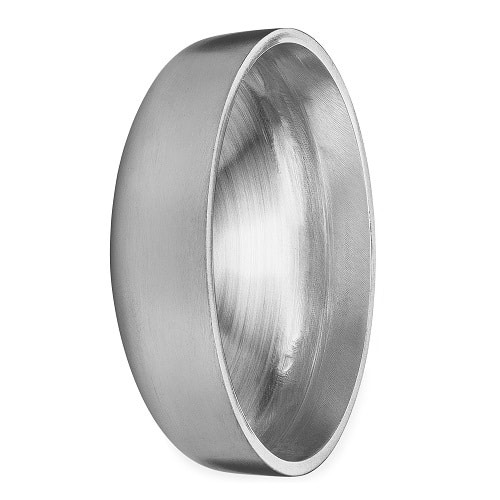-
Cangzhou Yulong Steel Co., Ltd.
-
Phone:
+86 13303177267 -
Email:
admin@ylsteelfittings.com
- English
- Arabic
- Italian
- Spanish
- Portuguese
- German
- kazakh
- Persian
- Greek
- French
- Russian
- Polish
- Thai
- Indonesian
- Vietnamese
- Zulu
- Korean
- Uzbek
- Hindi
- Serbian
- Malay
- Ukrainian
- Gujarati
- Haitian Creole
- hausa
- hawaiian
- Hebrew
- Miao
- Hungarian
- Icelandic
- igbo
- irish
- Japanese
- Javanese
- Kannada
- Khmer
- Rwandese
- Afrikaans
- Albanian
- Amharic
- Armenian
- Azerbaijani
- Basque
- Belarusian
- Bengali
- Bosnian
- Bulgarian
- Catalan
- Cebuano
- China
- China (Taiwan)
- Corsican
- Croatian
- Czech
- Danish
- Esperanto
- Estonian
- Finnish
- Frisian
- Galician
- Georgian
- Kurdish
- Kyrgyz
- Lao
- Latin
- Latvian
- Lithuanian
- Luxembourgish
- Macedonian
- Malgashi
- Malayalam
- Maltese
- Maori
- Marathi
- Mongolian
- Myanmar
- Nepali
- Norwegian
- Norwegian
- Occitan
- Pashto
- Dutch
- Punjabi
- Romanian
- Samoan
- Scottish Gaelic
- Sesotho
- Shona
- Sindhi
- Sinhala
- Slovak
- Slovenian
- Somali
- Sundanese
- Swahili
- Swedish
- Tagalog
- Tajik
- Tamil
- Tatar
- Telugu
- Turkish
- Turkmen
- Urdu
- Uighur
- Welsh
- Bantu
- Yiddish
- Yoruba

Aug . 13, 2024 04:22 Back to list
Techniques and Best Practices for Welding Pipes Together in Industrial Applications
Welding Pipe to Pipe Techniques, Considerations, and Applications
Welding is a critical joining process used across various industries to create strong and durable connections between metal components. When it comes to welding pipes—an integral aspect in sectors like construction, oil and gas, and manufacturing—the expertise and technique employed can significantly influence the structural integrity and longevity of the joints. This article explores the intricacies of welding pipe to pipe, addressing the methods, considerations, and real-world applications.
Common Welding Techniques
There are several welding techniques suited for the task of joining pipes, each with its own advantages and drawbacks
1. Stick Welding (SMAW) Shielded Metal Arc Welding is one of the most widely used pipe welding methods. It involves using a consumable electrode coated in flux to create an arc between the electrode and the workpiece. This method is portable and effective for outdoor applications but may require significant skill to control the bead and avoid defects.
2. TIG Welding (GTAW) Gas Tungsten Arc Welding is favored for its ability to deliver high-quality welds, especially when working with thin materials or stainless steel. TIG welding uses a non-consumable tungsten electrode and requires a filler rod for most applications. While it offers precision, it demands a high level of skill and a slower welding speed compared to other methods.
3. MIG Welding (GMAW) Gas Metal Arc Welding is an efficient technique that uses a continuous wire feed as an electrode and an inert gas to shield the weld. MIG welding is relatively easier to learn, making it ideal for beginners. It is commonly used for thicker pipes and can produce clean and high-speed welds.
4. Flux-Cored Arc Welding (FCAW) This method is similar to MIG but uses a hollow electrode filled with flux. FCAW can be used in windy conditions where shielding gas might dissipate, making it suitable for outdoor projects.
Considerations for Pipe Welding
welding pipe to pipe

Successful pipe welding is contingent on several factors, including
1. Material Compatibility Understanding the materials involved—such as steel, stainless steel, or aluminum—is crucial for selecting the appropriate filler materials and welding technique. Different metals have various properties that can affect the weld characteristics, including melting points and thermal conductivity.
2. Joint Preparation Proper preparation of the pipe ends before welding is essential. This often involves cleaning, beveling, and ensuring proper alignment. The goal is to create a tight fit that minimizes the chances of defects such as porosity or inclusions.
3. Welding Position Pipes can be welded in various positions (flat, horizontal, vertical, or overhead), which can significantly affect the welding process. Each position presents unique challenges and may require different techniques or equipment adjustments.
4. Post-Weld Treatments After welding, it may be necessary to perform rework, such as grinding or polishing, to achieve the desired aesthetics or to conform to specifications. Additionally, stress-relief treatments such as annealing may be needed to reduce residual stresses.
Applications of Pipe Welding
The applications of pipe welding are vast and widespread
- Oil and Gas Industry Pipelines transport crude oil, natural gas, and other hazardous materials, necessitating robust and leak-proof welds to ensure safety and efficiency. - Water Supply Systems Properly welded pipes ensure the integrity of municipal water systems, preventing leaks and contamination. - Manufacturing Many manufacturing processes rely on welded piping for fluid transport, reactor systems, or structural support.
In conclusion, welding pipe to pipe is a specialized skill that combines technical knowledge with practical expertise. By mastering the various techniques, understanding the critical considerations, and recognizing the broad applications, welders can ensure that their work contributes to safe and long-lasting structures. As industries continue to evolve, so too will the methods and technologies utilized in pipe welding, underscoring the importance of ongoing education and training in this essential trade.
Latest news
-
ANSI 150P SS304 SO FLANGE
NewsFeb.14,2025
-
ASTM A333GR6 STEEL PIPE
NewsJan.20,2025
-
ANSI B16.5 WELDING NECK FLANGE
NewsJan.15,2026
-
ANSI B16.5 SLIP-ON FLANGE
NewsApr.19,2024
-
SABS 1123 FLANGE
NewsJan.15,2025
-
DIN86044 PLATE FLANGE
NewsApr.19,2024
-
DIN2527 BLIND FLANGE
NewsApr.12,2024
-
JIS B2311 Butt-Welding Fittings LR/SR 45°/90° /180°Seamless/Weld
NewsApr.23,2024











